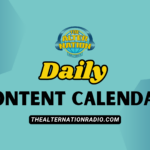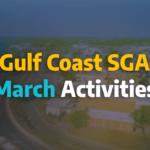When it comes to show formats like a morning talk show, often times you will have guests or people of interest to interview. These could be anyone from local celebrities to businesses. But how exactly do you, the host, get the information out of the guest and out to the public?
This is where “interview skills” come into play. Those include building a rapport with your guest and knowing what questions to ask. That’s probably why you’re here; “What questions do I ask?” We’ll talk about the logic behind different mediums and the paths to explore to fit your time frame.
Talk Show Logic: Platform vs. Investigative Journalism
There are a few varieties of interviews. In an investigative interview, you are looking to get answers to questions that will shed light on a story that may not otherwise be told in a convincing manner. You follow the story to the people that have the answers, then interview them. Alternatively, you or your organization has a platform and use interviews to disseminate information to your audience. Let’s use WKGC’s Morning Mix talk show as an example to explore the use of interview in a platform based medium.
This style of talk show interview can be seen from your local TV or radio station up to famous late night shows. Often with late night talks shows, the guests will come on and chat with the host, then close their segment by the host whipping out the guests new book/album/movie poster and promoting that for two or three sentences before they throw to commercial. This shows the logic behind this type of interview. Everyone has a specific goal or reason for being on the show.
That is a wonderful place to start planning your questions that you will ask your guest. Look objectively at why the guest wants to be on the show. Often times it to promote something like an event or a product. So ask yourself, what is that thing they want to promote.
For example, we at WKGC recently has the Panama City Rescue Mission on the Morning Mix. We usually have community service organizations on-air to help promote events coming in the near future. From a top-down perspective, the station is providing a platform to reach an audience and the guests are providing the station with interesting local content that often serves a public need. As the host, I need to understand what the organization is and why they are coming on the show. In the Rescue Mission’s case, it was to promote the Thanksgiving Lunch on Thanksgiving Day that is free to the whole community, not just those in specific need.
Once you know why the guest is coming on, it gets easy. You simply apply the 5 W’s you probably learned in 3rd grade. So let’s breakdown the Rescue Mission’s Reason:
Who: The Panama City Rescue Mission
What: Thanksgiving Lunch
When: Thanksgiving Day 11am-3pm
Where: Rosenwald Middle School
Why:
When it comes to show formats like a morning talk show, often times you will have guests or people of interest to interview. These could be anyone from local celebrities to businesses. But how exactly do you, the host, get the information out of the guest and out to the public?
This is where “interview skills” come into play. Those include building a rapport with your guest and knowing what questions to ask. That’s probably why you’re here; “What questions do I ask?” We’ll talk about the logic behind different mediums and the paths to explore to fit your time frame.
Talk Show Logic: Platform vs. Investigative Journalism
There are a few varieties of interviews. In an investigative interview, you are looking to get answers to questions that will shed light on a story that may not otherwise be told in a convincing manner. You follow the story to the people that have the answers, then interview them. Alternatively, you or your organization has a platform and use interviews to disseminate information to your audience. Let’s use WKGC’s Morning Mix talk show as an example to explore the use of interview in a platform based medium.
This style of talk show interview can be seen from your local TV or radio station up to famous late night shows. Often with late night talks shows, the guests will come on and chat with the host, then close their segment by the host whipping out the guests new book/album/movie poster and promoting that for two or three sentences before they throw to commercial. This shows the logic behind this type of interview. Everyone has a specific goal or reason for being on the show.
That is a wonderful place to start planning your questions that you will ask your guest. Look objectively at why the guest wants to be on the show. Often times it to promote something like an event or a product. So ask yourself, what is that thing they want to promote.
For example, we at WKGC recently has the Panama City Rescue Mission on the Morning Mix. We usually have community service organizations on-air to help promote events coming in the near future. From a top-down perspective, the station is providing a platform to reach an audience and the guests are providing the station with interesting local content that often serves a public need. As the host, I need to understand what the organization is and why they are coming on the show. In the Rescue Mission’s case, it was to promote the Thanksgiving Lunch on Thanksgiving Day that is free to the whole community, not just those in specific need.
Once you know why the guest is coming on, it gets easy. You simply apply the 5 W’s you probably learned in 3rd grade. So let’s breakdown the Rescue Mission’s Reason:
Who: The Panama City Rescue Mission
What: Thanksgiving Lunch
When: Thanksgiving Day 11am-3pm
Where: Rosenwald Middle School
Why:To provide hot meals at no cost to any member of the community, in need or not.
Often, you can find all this information in an event flyer or press release from the organization. You should get this before the interview so you will know what you’re discussing when the time comes. Those are the basic facts you’ll cover when the interview is rolling. Always leave room to follow a train of thought as the guest answers your questions, though. That is where the conversation gets interesting and makes your interview unique to anyone else’s.
Medium: Fitting Your Interview to a Certain Time Frame
This is a top-down factor that will influence exactly how in depth you can or should go with your interview: How much time do you have “on-air”. On a local tv news station, you may only have one segment lasting five minutes total to get the information out. That gives you just enough time to cover the 5 W’s of the topic and add a little personality to the story, but that’s it.
For the Morning Mix, we have an hour-long show that shakes out to about 20-minutes of conversation time. This presents both a challenge and an opportunity. If I use what I’ve already learned, “Why is my guest coming on the show?”, I’ll still be left lacking 15 minutes of content. So how do I fill that time?
The answer on how to fill additional time is to broaden the scope of your 5 W’s. Let’s get with an analogy. Imagine the interview is an onion, like an ogre. The “Why is my guest coming on the show?” is the core layer. If you run out of content on the core layer and still have time to fill, you can go up to the next layer, which is broader than the core. Often the easiest subject to cover on this layer is about the person or organization itself.
Now that our focus is on the organization, we can apply the 5 W’s to them as well and pad our content runtime with interesting information that other media outlets may not have taken the time to explore. Let’s look back at the Rescue Mission.
Who: The Panama City Rescue Mission
What: A community service organization focused on providing assistance for members of the community that are often homeless or struggling with addiction.
When: Year-round
Where: Our local area with two shelter locations that separate the men from the women and children as each group may have certain needs that cannot be addressed in mixed company.
Why: A love for their fellow man as guided by their faith.
How to Get the Info Out of Your Guests: Build Rapport
Rapport is a relationship with someone else build on concern and understanding. If you show your guests that you have great consideration for their work and message, they will be more willing and comfortable in speaking with you “on-air”. The question now is how? We’ll cover that in the next addition.
To provide hot meals at no cost to any member of the community, in need or not.
Often, you can find all this information in an event flyer or press release from the organization. You should get this before the interview so you will know what you’re discussing when the time comes. Those are the basic facts you’ll cover when the interview is rolling. Always leave room to follow a train of thought as the guest answers your questions, though. That is where the conversation gets interesting and makes your interview unique to anyone else’s.
Medium: Fitting Your Interview to a Certain Time Frame
This is a top-down factor that will influence exactly how in depth you can or should go with your interview: How much time do you have “on-air”. On a local tv news station, you may only have one segment lasting five minutes total to get the information out. That gives you just enough time to cover the 5 W’s of the topic and add a little personality to the story, but that’s it.
For the Morning Mix, we have an hour-long show that shakes out to about 20-minutes of conversation time. This presents both a challenge and an opportunity. If I use what I’ve already learned, “Why is my guest coming on the show?”, I’ll still be left lacking 15 minutes of content. So how do I fill that time?
The answer on how to fill additional time is to broaden the scope of your 5 W’s. Let’s get with an analogy. Imagine the interview is an onion, like an ogre. The “Why is my guest coming on the show?” is the core layer. If you run out of content on the core layer and still have time to fill, you can go up to the next layer, which is broader than the core. Often the easiest subject to cover on this layer is about the person or organization itself.
Now that our focus is on the organization, we can apply the 5 W’s to them as well and pad our content runtime with interesting information that other media outlets may not have taken the time to explore. Let’s look back at the Rescue Mission.
Who: The Panama City Rescue Mission
What: A community service organization focused on providing assistance for members of the community that are often homeless or struggling with addiction.
When: Year-round
Where: Our local area with two shelter locations that separate the men from the women and children as each group may have certain needs that cannot be addressed in mixed company.
Why: A love for their fellow man as guided by their faith.
How to Get the Info Out of Your Guests: Build Rapport
Rapport is a relationship with someone else build on concern and understanding. If you show your guests that you have great consideration for their work and message, they will be more willing and comfortable in speaking with you “on-air”. The question now is how? We’ll cover that in the next addition.
ABOUT THE AUTHOR
Caleb Jordan
Student Author - Fall 2019





